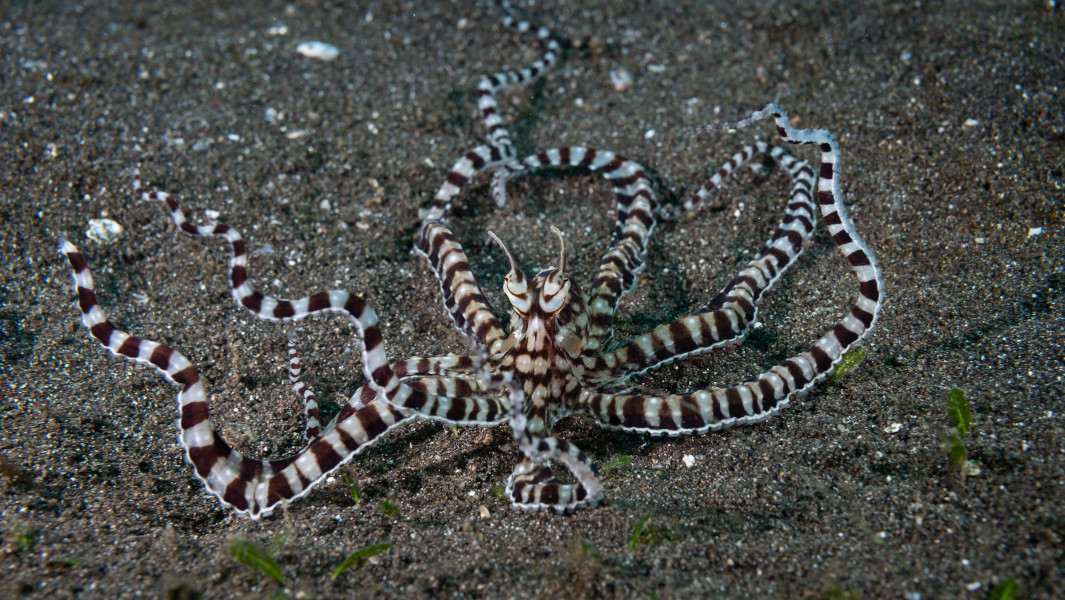Meet the Mimic octopus, the curious cephalopod that can impersonate marine animals

It might be easy to spot the striped octopus in the photo… but just wait a few seconds, and suddenly a sea snake might take its place!
This curious creature is the Mimic octopus (Thaumoctopus mimicus), aptly named for its ability to shapeshift into dangerous marine animals to evade danger and capture different prey.
While several species of octopus have been observed in the wild mimicking their environment using their chromatophores, this octopus is undoubtedly the record holder for greatest octopus mimic, as it is the only one of its kind to impersonate other animals.
Its normal colour is a light beige, but when approached by a predator, it quickly changes its appearance to mimic an animal that’s a greater threat, giving the octopus enough time to make an escape.
@jordanwebster5 #themoreyouknow #octapus #sealife ♬ original sound - Jordan Webster
Studies revealed that this extraordinary species can successfully impersonate at least 16 very different animals: flounder, sea snake, cuttlefish, stingray, brittle star, lionfish, snake eel, jawfish, blenny, mantis shrimp, ghost crab, hermit crab, jellyfish, sand anemone, sea cucumber, and feather star.
Of these options, perhaps the two most impressive are the sea snake and lionfish – whereby the mimic octopus buries itself in the sand except for two curled, S-shaped arms to mimic a snake, or fans out its arms in a dazzling array of brown and white ‘spines’ while swimming to impersonate the deadly fish.
Notably, the creatures also have been seen mimicking not just the colour and shape of these animals, but the behaviour of these other species, indicating that they are extremely intelligent and observant.
They also will use ‘aggressive mimicry’ to approach wary prey, for example dancing like a crab’s apparent mate, before lurching in and grabbing it for dinner.
The Mimic Octopus is the most mind blowing animal on this planet. Straight up, if someone told me it was an alien, I'd believe it. pic.twitter.com/HpBTUSNuWk
— Tuxedo Mask (@TheLoveBel0w) March 10, 2018
And while its impersonations aren’t always perfect, it’s believed they’re duplicitous enough to dazzle predators for enough time for the octopus to get away.
Mimic octopuses are typically found in Indonesia and elsewhere in the Indo-Pacific, as well as the Red Sea.
But their official discovery was surprisingly late – the mimic octopus was first detected by fishermen in Indonesia in 1998.
Further investigation revealed the species has a wide distribution across the waters of Indonesia, New Guinea, the Philippines, Malaysia, and New Caledonia, and that it is active during the day, making its recent discovery remarkable to scientists.
So many theorize that the octopus’ hidden existence was a testament of success to its astonishing skills of animal mimicry.
Header image: Shutterstock


